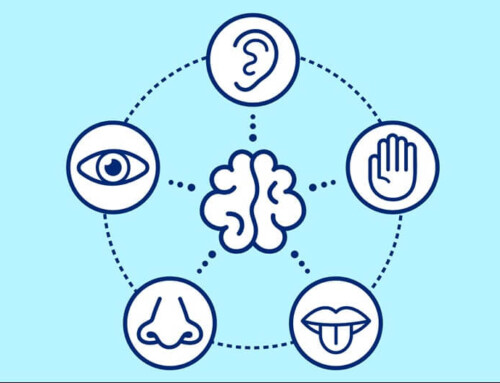Too often a sales team is trained merely on internal information. A salesperson might know product, service, or company information extremely well, but still struggles to meet the needs of their clients. This lack of connection between sales knowledge and customer needs can create issues during the buying cycle. Is the information given to your sales team created by those with hands-on experience with the product, really experience? Do your sales teams know how to identify the real needs of the customer and prioritize what’s most important in making the purchasing decision? Here are a few ways to help ensure your sales professionals and training teams don’t disconnect knowledge with the buying cycle:
GO BEYOND INSIDE INFORMATION
Internal information is still valuable, but it must be combined with insight into how customers will actually use your product or service. Here are three specific ways external knowledge will help your company.
- Higher Sales and Satisfaction
Customers are looking for professional advice on how to improve their business. Equipped with real success stories, your sales team can make the case for why your services or products are needed. Likewise, by taking time to learn specific client needs, your team can create a unique customer experience that is focused on helping their business succeed. You will not only see an increase in sales but also higher retention rates.
- Inspire Your Sales Team
Gaining hands-on knowledge will enable your salespeople to become more passionate and excited about their jobs. Once they see the real-world implications they can authentically make their pitch. This will not only be apparent to the client, but it will also improve the workplace atmosphere. Don’t just tell – show. Don’t just show – experience. They are the key factors that make the difference between a sales pitch and a value-based conversation where the customer understands why your product or service is the right solution.
- Streamline Products and Services
A product might look great on paper, but any number of test runs can’t replace customer feedback. As a sales manager, at times your team will have more information on product use than you. Instead of imposing impersonal tactics, sit down with your salespeople and ask them about the insights they have gained. They may have some valuable ideas for improving your product or services. Sometimes there can be too many features, an interface may be too confusing, a process may be too cumbersome, there may need to be more touchpoints throughout the project, and so forth.
To ensure that feedback doesn’t become overly negative or a series of complaints with no resolutions, encourage systems that invite discussion. Use a sample outline such as:
- Describe the problem or suggestion for improvement
- Why do you think the problem happened or why do you think the improvement is needed?
- What are some ways that the problem could be resolved or how could improvements be made?
- How long would it take to resolve the problem or make improvements?
- What kind of cost would be involved to resolve the problem or make improvements?
- Who else would need to be involved?
- Would the ROI benefit from making the change? How long before the ROI would be seen?
REDISCOVER THE ART OF LISTENING
While there are many ways to assess how your product or services are being used, the best way to uncover this information is simply by listening. Here are some questions that will help you and your team gain important insight while still using internal expertise.
“What are your company goals? How are these goals measured?”
When meeting a prospect, it important to gain an understanding of both immediate and big-picture goals. Even if their goals aren’t immediately connected to what you are selling, it is still worthwhile making your prospect feel heard. Do your research ahead of time and ask intelligent questions based on what you already know. This is also a good chance to learn why they reached out to you, or why you may feel that you are a good fit for them.
“How does your company manage ____ pain point?”
Your sales team should be educated on the common pain points that most businesses face. Ask the prospect how they deal with these issues and help them identify problems and objectives. This will not only provide a natural segue to how your company can help, but it also gives the practical knowledge you need.
“How do you think our product or service could help you meet your objectives?”
Your product or service may have specific ideas or they may not. Be ready to share your own ideas and build off of whatever they already have in mind. Explain the various options your company provides and give real examples of how businesses have been helped. Tailor these stories to your customer’s situation. If your prospect already has a similar product or service in place, ask how it is currently being used and why they chose their current vendor. If there are areas of dissatisfaction, highlight the ways that your company can do better.
“Is our product or service meeting your expectations?”
Be sure to ask for feedback from established customers. Don’t assume that all customers are happy just because they aren’t complaining and continue to work with you.
Instead, look for ways that you can continue to earn their business – including referral business – from them. Does the product or service work the way it was advertised, the way your sales team promised it would, the way it should within the context of their environment, etc.” When asking these questions, avoid asking questions that are mere yes or no answers. Invite your customers to be more open.
- What are some ways that we can make our product or service more valuable to you?
- How do you feel our team is doing in terms of delivering on our promises?
- Can you tell us about any results or success stories you have had since using our products or services?
- Are there things we could be doing better? If so, can you explain?
“How is it actually being used and how has it helped?”
This question is perhaps the most direct and will help bring together all the other information that has been gathered. Be sure to also ask if there are services or functions that seem unnecessary. If your client is not the end-user, ask some basic questions about the final customer’s usage, common feedback, and long-term satisfaction.
Conclusion
Remember, you and your team are not only learners, you are also the experts. After learning the customer’s unique perspective, be proactive in sharing your own perspective. The whole point of gathering information on client needs is to connect internal information to the external needs of your customers. Once you learn the objectives be bold in suggesting new solutions. This is why your client came to you in the first place.
Looking for ways to reward your top performers for a job well done? Contact Gavel International to learn about our travel incentive programs.
This article was last updated on June 10, 2025
- Why Hustle Culture Can Harm Sales Success – and How to Repair the Damage - June 30, 2025
- Enhance Sales Through Team-Friendly Storytelling - May 5, 2025
- Unlocking Excellence: The 7 Traits of Top Performers and Their Impact - April 14, 2025






